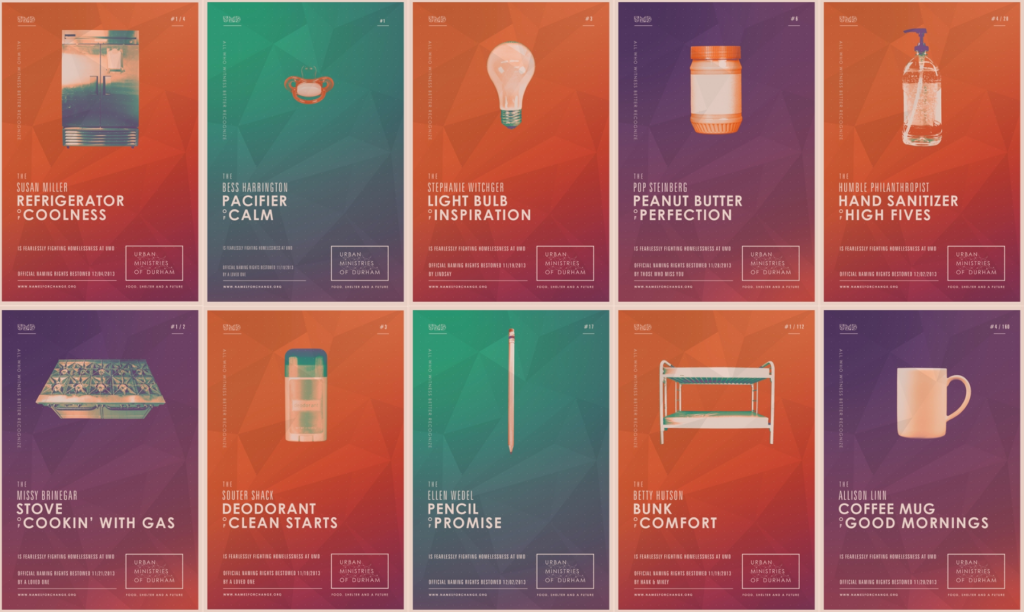
“Urban Ministries of Durham [UMD] is the primary point of connection for those who are homeless, hungry, or in need in Durham. With the help of nearly 4,000 volunteers, countless donations from the community, and dedicated staff, we serve some 6,000 people each year who come seeking food, shelter, clothing, and supportive services. We are the primary public homeless shelter in Durham, and we welcome neighbors regardless of race, ethnicity, religious beliefs or non-faith, sexual orientation, gender identity, or disability. We provide immediate relief to those experiencing chronic or temporary homelessness and work with clients to end their homelessness as quickly and responsibly as possible. Last year, 118 people ended their homelessness at UMD” (Urban Ministries of Durham).
“We believe in the inherent dignity and value of all people and believe no one’s basic human needs should go unmet” and “recognizing that each person is in charge of their own life, we listen closely, work in partnership, and support the ways that those in need help one other” (Urban Ministries of Durham).
The Urban Ministries of Durham in North Carolina sounds like a normal non-profit organization, but they started to use a new technique to raise awareness about their work and gain funding and supplies; art and people.
“We’re selling naming rights” of resources we need in our mission “because we want you to see how critical every item is to helping us fight homelessness” (Urban Ministries of Durham).
But how does selling naming rights work?
The UMD is creating posters with items like deodorant, lightbulbs, and other resources necessary to end homelessness in their community. These posters can then be customized and “named” by people providing donations for that specific item (Urban Ministries of Durham). For example, if I bought the naming rights of a lightbulb, I could customize the lightbulb poster, and that money would be used towards buying lightbulbs for the organization.

These posters made a way for the organization to connect with the community through art while still furthering its mission. But can this “consumerist” outlook on donations be potentially harmful in the concept of non-profits or charity?
Although this concern is there, it seems as though UMD has had success in this artistic way of fundraising and they have raised $159,739 of their $200,000 goal through these posters.
In this context, how can design help financial systems, personalization, and art to better commit to banks or the people around them?
References:
Urban Ministries of Durham. About Urban Ministries of Durham. https://umdurham.org/about/
Urban Ministries of Durham. Names for Change. https://www.namesforchange.org/



